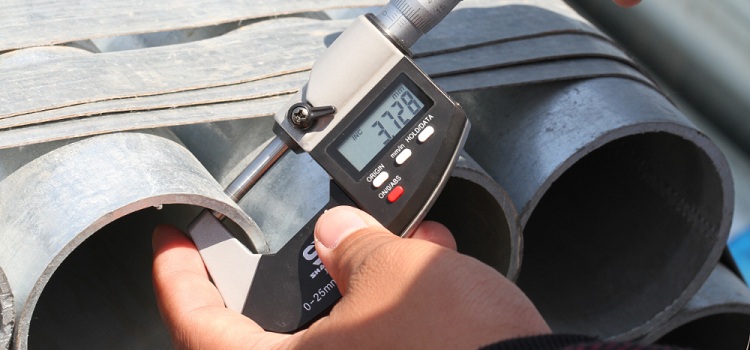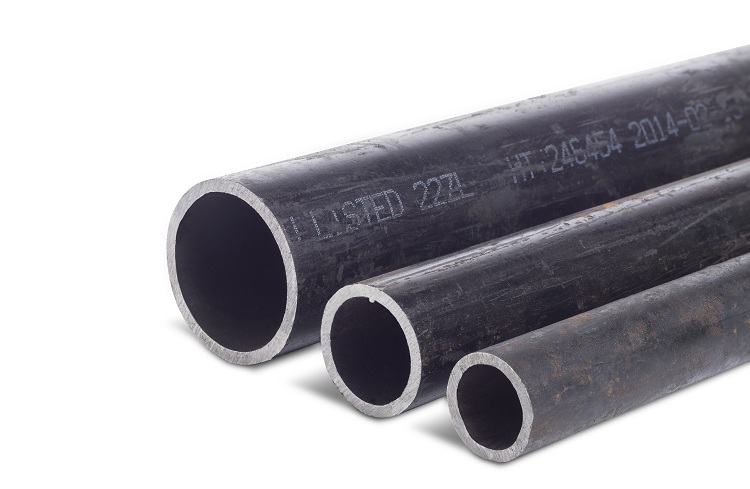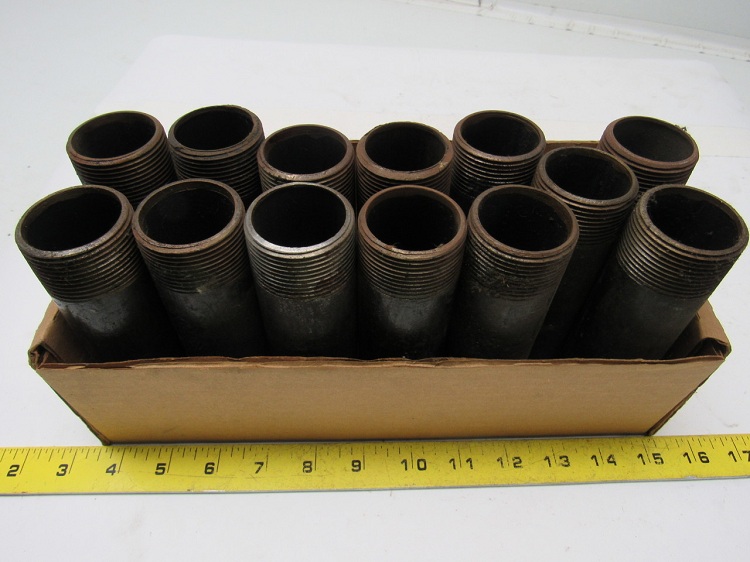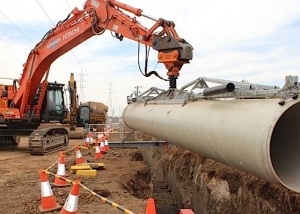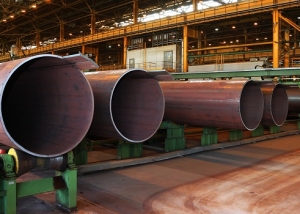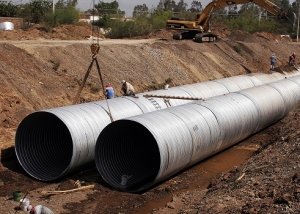The dimensions of plumbing pipes are a combination of characteristics, including the length, diameter and wall thickness. The first of them, as arbitrarily variable, is usually neglected. Distinguishing products by the values of diameter and wall thickness, as well as the relationship between them, a very significant indicator for plastic pipelines, they carry out design and calculations during installation and repair of systems that transport various working fluids.
Content
Concepts used by GOSTs and TU to indicate parameters relative to pipe sizes
A few decades ago, when it came to pipes, it was possible to almost unmistakably predict what was meant by products made of rolled steel. Consumers are now dealing with a variety of materials used to produce pipes. In addition to traditional metal products (steel, cast iron and copper), plastic and metal-plastic ones have successfully replaced them, especially in the domestic sphere. This diversity itself makes us pay attention to the sizes of products, which often have to be used together and docked in the same designs.
The current GOSTs operate with concepts related to pipe sizes:
- lengths;
- several types of diameter;
- wall thickness.
As for the length, in relation to steel products it is considered as:
- unmeasured, with installed frames 4-12.5 meters;
- dimensional, located in the specified range;
- multiple dimensional, implying that in the specified range for cutting, five-millimeter allowances are provided;
- approximate, again related to the specified range.
As for the diameter of the products, then in GOST there was a place for such its types:
- internal;
- conditional, nominally expressing the internal in millimeters or rounded in inches;
- to the outside.
It's important to know! The outer diameter is the main indicator for the classification of pipes by size, they are classified as small, medium and large.
The wide distribution of a variety of plastic products has led to the emergence of many regulatory documents in the form of tables of correspondence of their diameters to steel counterparts.
Table 1
| Nominal diameter DN |
Diameter in inches including diameter threads G » |
Outer diameter of the pipe D, mm | |||
| DIN / EN | VGP | ES, BSh | Polymer | ||
| 10 | 3/8″ | 17,2 | 17 | 16 | 16 |
| 15 | 1/2″ | 21,3 | 21,3 | 20 | 20 |
| 20 | 3/4″ | 26,9 | 26,8 | 26 | 25 |
| 25 | 1″ | 33,7 | 33,5 | 32 | 32 |
| 32 | 1 1/4″ | 42,4 | 42,3 | 42 | 40 |
| 40 | 1 1/2″ | 48,3 | 48 | 45 | 50 |
| 50 | 2″ | 60,3 | 60 | 57 | 63 |
| 65 | 2 1/2″ | 76,1 | 75,5 | 76 | 75 |
| 80 | 3″ | 88,9 | 88,5 | 89 | 90 |
| 90 | 3 1/2″ | 101,6 | 101,3 | 102 | 110 |
| 100 | 4″ | 114,3 | 114 | 108 | 125 |
| 125 | 5″ | 139,7 | 140 | 133 | 140 |
| 150 | 6″ | 168,3 | 165 | 159 | 160 |
| 160 | 6 1/2″ | 177,8 | — | 180 | 180 |
| 200 | 8″ | 219,1 | — | 219 | 225 |
| 225 | 9″ | 244,5 | — | 245 | 250 |
| 250 | 10″ | 273 | — | 273 | 280 |
| 300 | 12″ | 323,9 | — | 325 | 315 |
| 400 | 16″ | 406,4 | — | 426 | 400 |
| 500 | 20″ | 508 | — | 530 | 500 |
| 600 | 24″ | 609,6 | — | 630 | 630 |
| 800 | 32″ | 812,8 | — | 820 | 800 |
| 1000 | 40″ | 1016 | — | 1020 | 1000 |
| 1200 | 48″ | 1219,2 | — | 1220 | 1200 |
How to determine the size of the pipes in inches and centimeters
When the pipe sizes in inches are indicated, then, at first glance, this should not lead to any difficulties in work. With the plumbing dimensions of the pipes in inches you have to deal almost constantly. It seems that there is nothing complicated, since it is well known that an inch is equated to 2.54 centimeters. In terms of the diameter of the pipe in inches, it is customary to round off, which is carried out in strict accordance with the rules adopted in mathematics, that is, in a smaller direction. Thus, the value of one inch is equal to two and a half centimeters exactly.
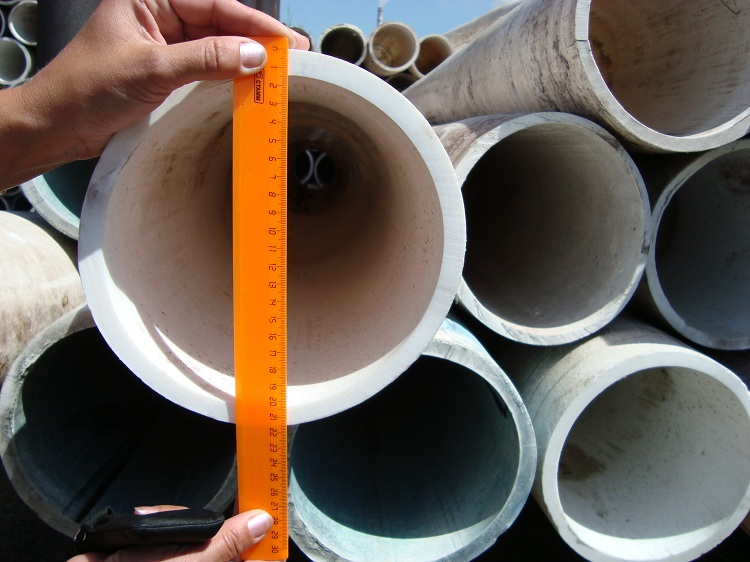
By measuring the diameter of the pipe in centimeters, you can translate the resulting number into inches
If you take an inch steel pipe, then its dimensions, expressed in millimeters, will be as follows:
- 33.5 - for the outer diameter;
- 25.5 or 27.1 - for the internal, depending on whether they measure normal or amplified.
Note! As you can see, none of the above values corresponds exactly to one inch. Steel inch pipe is such in internal diameter, and even then quite approximately.
If the dimensions of the steel pipes in inches are given, then it is worth using a table that considers the inner and outer diameter of the pipes in inches and millimeters. Diameter in inches is taken in fourteen sizes, from one fourth to six. Each size given in inches corresponds to the inside and outside diameter in millimeters
If we take, for example, a half-inch pipe, then the dimensions of its inner and outer diameter, expressed in millimeters, will be, respectively, 15 and 21.3. For inch - similar correspondence will be expressed by the following values: 25 and 33.5.
Difficulties associated with the need to operate with two systems, the metric and the so-called imperial, in which measurements were usually made in inches, arise, as a rule, when working with steel structures made in the Soviet period. Then it was customary to use the notation for the elements of water supply systems in inches. The gradual displacement of steel as the main material for the production of pipes, at least in the municipal sphere, can lead to certain difficulties. It is connected with the fact that for more and more spreading plastic and metal-plastic products, as well as for those made of other metals and alloys, in addition to steel, it is customary to use the metric system more familiar to most people in the size designations.
How is the diameter of the pipe determined in inches
Another not very convenient circumstance is associated with the use of pipe thread, the designations for which exist in both the metric and imperial systems. To obtain accurate values for each type of thread, it is advisable to use special tables.
The diameter of the pipe thread in inches corresponds to a characteristic such as conditional passage, not associated with a specific unit of measurement and determining the throughput of the pipe. The magnitude of the conditional passage is taken only in whole numbers, it is the designation of the approximate conditional clearance. With each step of this value, as is commonly believed, the throughput of the pipeline system approximately increases by 40-60%. By selecting pipes and threaded fittings for laying or repairing the pipeline system in accordance with the tables, you can be sure that it will work properly. For a metal half-inch pipe with a thread, for example, the value of the outer diameter will be 20.956 mm, the inner diameter will be 18, 632.
If you have to work with data on pipe sizes given in inches, then transferring to the metric system is extremely simple. It is customary to take an inch for 25.4 mm. That is, to switch from the imperial system to the metric, you need to multiply the existing value in inches by 25.4 to get the value of the same parameter in millimeters.
Since the dimensions of plastic, metal-plastic and copper pipes are usually designated using the metric system, combining them with steel, you will have to transfer to the imperial system, operating with inches. Performing such a translation is a bit more complicated. Measurements can be made using simple instruments, for example, building tape or a tailor's centimeter. A more accurate result will be obtained if you use a caliper.The value obtained in the metric system will have to be multiplied by 0.398 to get the same parameter, but expressed in inches.
The translation of values associated with the dimensions of the products given in the metric and imperial systems has to be constantly performed by those who perform operations related to the installation and repair of plumbing devices, plumbing and sewage. As a rule, this happens when you have to change old steel pipes or combine them with plastic counterparts, as well as when dealing with pipe threads. And in that, and in another case, the notation in inches is often used, so you have to operate with quantities converted from the imperial system to the metric and vice versa.
